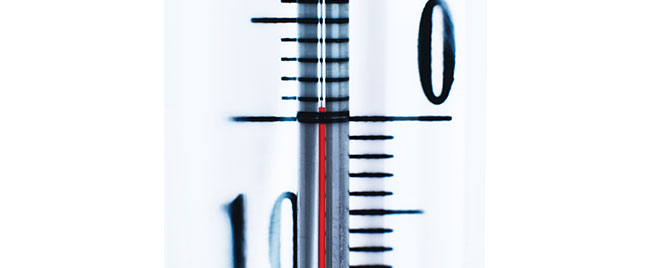The Bank of Japan (BOJ) surprised markets last month by implementing a negative interest rate policy as part of its continued fight against deflation. Negative rates turn the traditional rules of finance on their head and may confuse some market participants. Though ordinary borrowers and savers are unlikely to see negative interest rates at this stage, the new regime will impact the Japanese banking system and possibly the country’s international financial linkages.
How Do Negative Interest Rates Affect Borrowers and Savers?
Typically, savers receive some positive rate of interest when depositing funds with a bank. The customer is encouraged to delay consumption into the future, when her savings will be worth more. When saving rates are negative, a customer’s incentive is flipped. She is now motivated to consume today as delaying consumption is penalized rather than rewarded.
In practice, the BOJ’s recent move—along with similar policies already implemented by central banks in Europe—is targeted at banks rather than most individual savers and borrowers. The program is designed to levy negative rates on new cash reserves deposited by banks at the Bank of Japan. More specifically, the tiered system targets the rate applied to marginal increases in deposits or borrowing. Someone who has significant life savings in a bank account will not suddenly begin paying to store her money. Should the BOJ push rates into further negative territory, this could change. Were Japanese banks to institute negative rates on deposits, one risk is that Japanese savers begin to hoard cash stored outside of a bank account, among other unconventional potential responses.
The new policy gives the banks a strong incentive to lend or otherwise invest new funds they acquire from 2016 onwards. For Japanese borrowers, this should mean even lower loan rates, with Japan’s largest banks announcing their intentions to lower rates on 10-year home mortgages five basis points to 1.05 percent. Notably, after several European central banks implemented negative rates, some borrowers with variable-rate mortgages began receiving payments from their banks, though this is not expected to occur—at least on any large scale—in Japan.
Negative Rates Hurt Bank Earnings and May Encourage Existing Overseas Investment Trend
Banks make a substantial portion of their profits from net interest income—the difference between interest paid on deposits and earned on loans. Negative interest rates can hurt banks because the short-term interest paid on deposits typically cannot go much below zero before savers seek alternative assets, while the interest charged on long-term loans has more room to fall.
Despite this risk to earnings, the BOJ’s tiered system limits the impact on earnings and is expected to decrease bank profits by only 0.2-0.3 percent according to one estimate from Deutsche Bank. This cost could increase moving forward, however, if the BOJ reduces the negative rate further below its current level of -0.1 percent or increases the scope of excess reserves covered by the policy.
Bank earnings may further deteriorate as their existing government bonds mature and they invest in new issues. Notably, 10-year Japanese government bonds began trading at negative yields for the first time ever following the BOJ’s announcement. The impact from negative yields is expected to be much larger for smaller regional banks—who make a larger proportion of their earnings through interest income—and Japan Post, which has nearly half of its assets invested in Japanese government bonds. Japan Post, in the initial stages of partial government privatization after its November 2015 initial public offering, has seen its stock price decline below its IPO price over concern about the impact of negative rates.
Decreasing yields on Japanese assets may encourage further overseas expansion by Japanese banks, particularly in key growth markets like the United States and emerging Asia. As of September 30, 2015, Japanese banks had US$1.419 trillion in exposures to the United States and a further US$323 billion in exposures to developing Asia according to Bank for International Settlements Consolidated Banking Statistics. Together, these two areas represent just over 51 percent of Japanese banks’ global foreign claims. Japanese banks’ exposure to developing Asia is up nearly three-fold since the global financial crisis and five times the level of 10 years earlier. However, rising global volatility and the increasing cost of U.S. dollar funding—which the banks typically use in their overseas activity—serve as brakes on overseas expansion. For now, the banks sit between a rock and a hard place.
Conclusion
The Bank of Japan’s negative interest rate policy represents the latest salvo in the central bank’s long fight against deflation. It should further reduce borrowing costs for Japanese borrowers while avoiding major distortions in saving behavior given the tiered design of the new regime.
However, implementing a negative interest rate policy is not without risks. So far, negative rates for banks have generally not translated into negative rates for depositors in other countries under similar regimes. Further pushes into negative territory may force banks to levy negative deposit rates. This, in turn, could lead their customers to store their savings in cash in a safe (or under a mattress) rather than pay to store it at the bank. For Japanese banks already squeezed by low interest margins and limited credit demand, the risk to earnings is also significant. While expanding overseas might be a natural response to negative rates at home, volatility in key markets like developing Asia along with rising costs of U.S. dollar funding provide a countervailing force, putting banks in a difficult position.
The views expressed here do not necessarily reflect the views of the management of the Federal Reserve Bank of San Francisco or of the Board of Governors of the Federal Reserve System.
